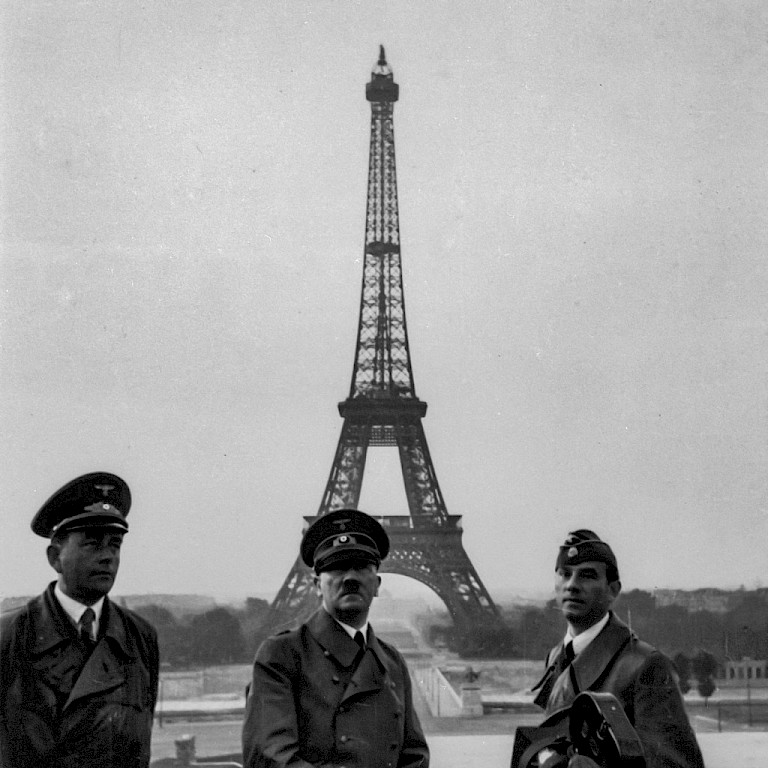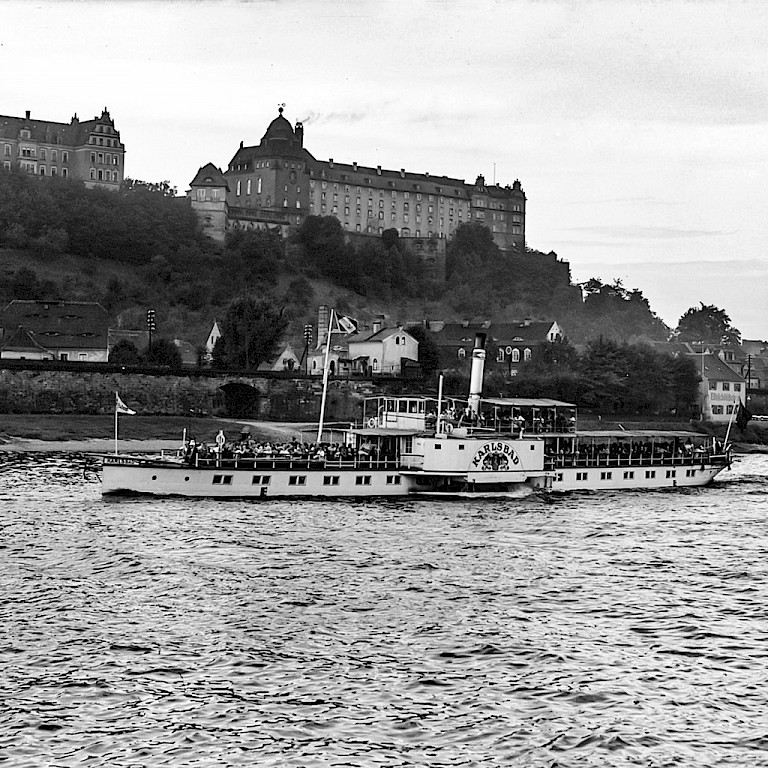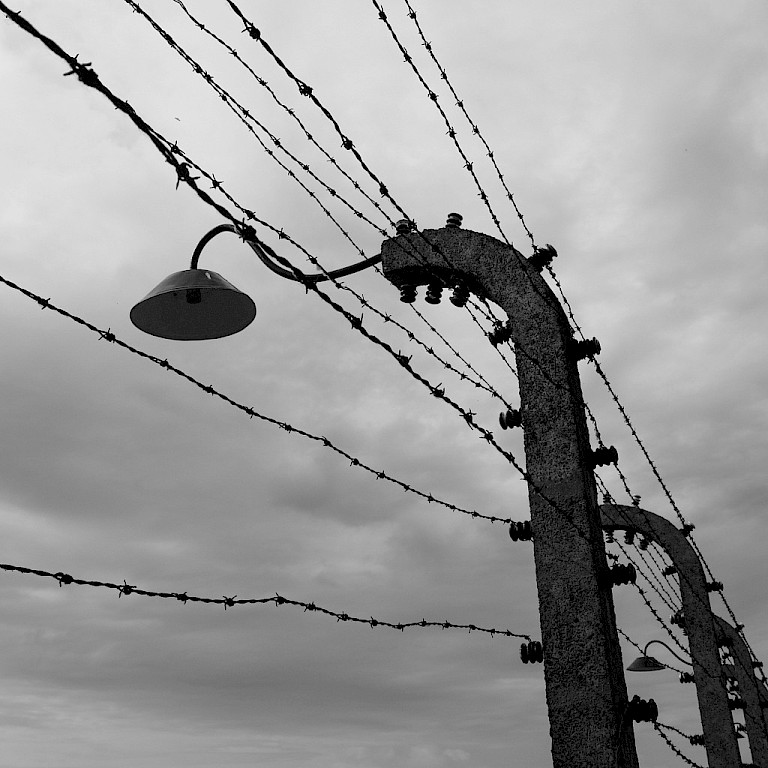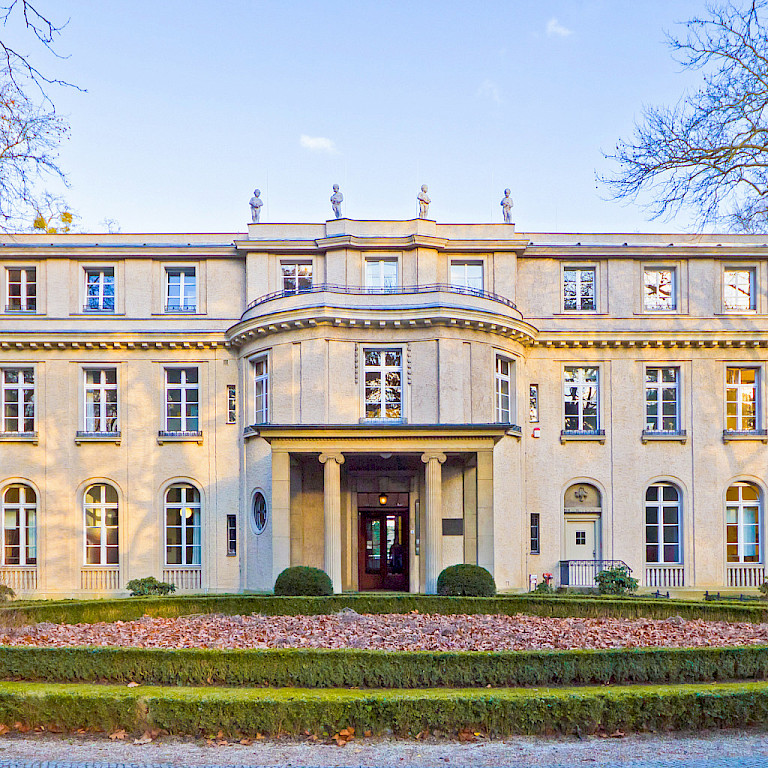
Hitler besichtigt Paris. 1940
Foto: akg-images

Pirna mit Sonnenstein. 1939
Foto: © SLUB / Deutsche Fotothek / Hahn, Walter

Konzentrationslager Auschwitz. 2010
Foto: Thomas Walther

Haus der Wannsee-Konferenz in Berlin. 2014
Foto: A. Savin/wikipedia
Rückkehr der Wehrmacht vom »Frankreichfeldzug«, Dresden. 1940
© Filmarchiv Hirsch-Film Dresden
07 THE “TOTAL WAR”
After taking power, Hitler repeatedly asserted his desire for peace to the world. However, his real intentions were different. With his generals, Hitler, was planning wars of aggression and the so-called people’s community. The German people were being prepared for war by Nazi propaganda. The production of heavy weapons and the reintroduction of compulsory military service in 1935 meant the breach of the 1919 Treaty of Versailles.
Dresden had been involved in the preparation of the planned war from the very beginning. As early as 1934, the first companies started to produce military goods. More than 240 companies and businesses in the Dresden area were directly involved in the National Socialist’s armament programme.
Among the largest defence companies in Dresden was the Sachsenwerk and the Goehlewerk of Zeiss Ikon AG. Among other things, they produced optical equipment for the air force and navy as well as ammunition and bomb fuses.
During the war, concentration camp prisoners and forced labourers were increasingly used in the factories where they were ruthlessly exploited.
After the integration of Austria into the National Socialist German Reich, Adolf Hitler occupied the Sudetenland and, in the spring of 1939, the remaining territory of the Czechoslovakian Republic. This provoked a new war in Europe.
Finally, Hitler gave the German troops the order to attack Poland. More than one million soldiers attacked the eastern neighbouring country on the 1st of September 1939. As Poland’s allied, France and Britain declared war on Germany.
Even before German soldiers crossed the border into Poland, German fighter planes bombed the Polish city Wielun in the early hours of September the 1st without any warning. Up to 1,200 civilians were killed in this air raid.
The Second World War had begun, and Wielún was the first city to be destroyed.
After the rapid victory over Poland, the occupation of large parts of Scandinavia and the Western Campaign, sometimes named the Battle of France ending in the capitulation of France on the 22nd of June 1940, Adolf Hitler thought he was at the height of his power. In 1941 he used the huge approval of the German population to implement his plan to attack the Soviet Union. By the end of 1942, German troops had conquered huge areas of the European part of the Soviet Union,
Together with advancing units of the SS and the “deployment groups”, the Wehrmacht was waging an unprecedented war of annihilation in Eastern Europe: the conquered and occupied territories were robbed of their resources at Hitler’s will, the local population was used for forced labour or systematically murdered.
People with physical and mental disabilities had no place in the National Socialist’s world view. They were considered to be “ballast lives”. After the beginning of the war, such people were systematically murdered in nursing homes and euthanasia centres. One of these euthanasia centres was not far from Dresden - in Pirna-Sonnenstein. Here, thousands of patients were killed with gas and in the summer of 1941 more than a thousand prisoners from concentration camps.
This was only the beginning: on the 20th of January 1942, the planned and complete extermination of the European Jews, the so-called “Final Solution” was decided at the Wannsee Conference.
Shortly after the conference, Dresden also began deporting Jewish citizens to the camps in Theresienstadt, Riga and Auschwitz.
Around the same time, the Allied air war against Hitler’s Germany and its allies entered a new phase. Please now proceed to the next exhibition room, which deals with the bombing and air raids on Dresden.